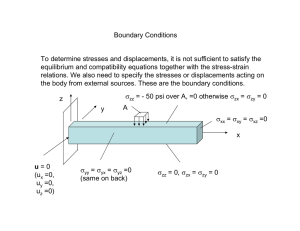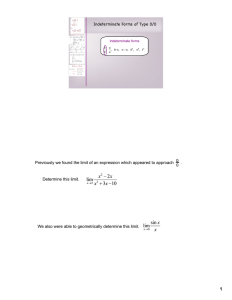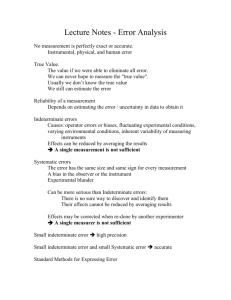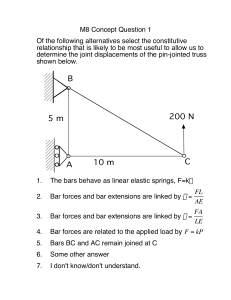MASSACHUSETTS INSTITUTE OF TECHNOLOGY Department of Mechanical Engineering
advertisement
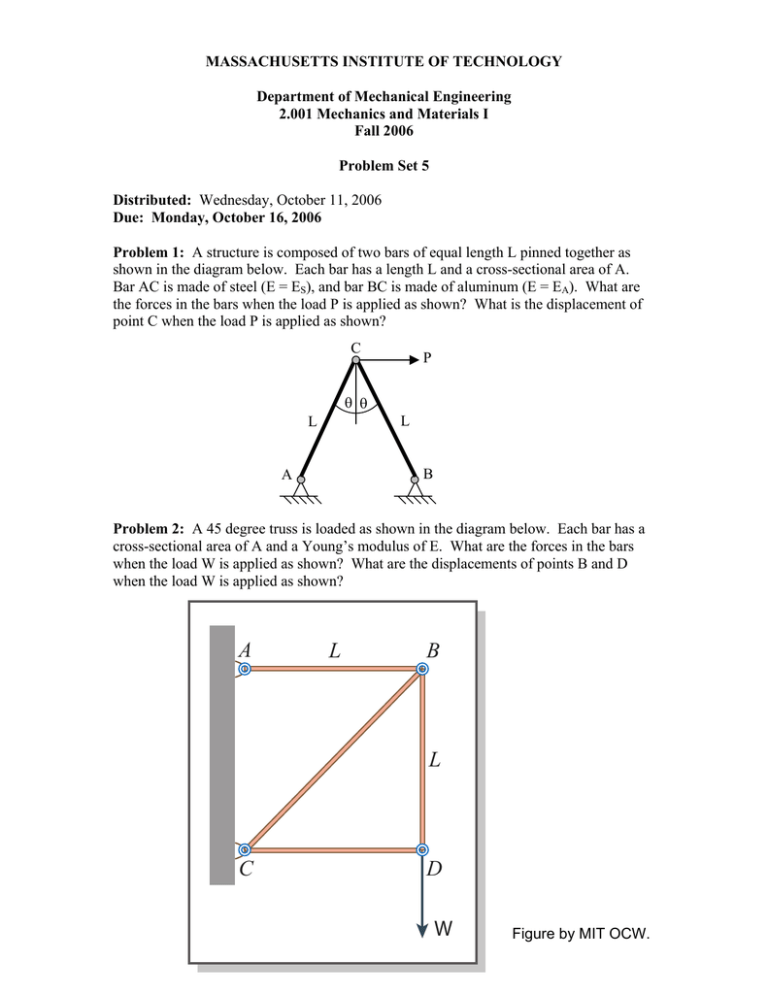
MASSACHUSETTS INSTITUTE OF TECHNOLOGY Department of Mechanical Engineering 2.001 Mechanics and Materials I Fall 2006 Problem Set 5 Distributed: Wednesday, October 11, 2006 Due: Monday, October 16, 2006 Problem 1: A structure is composed of two bars of equal length L pinned together as shown in the diagram below. Each bar has a length L and a cross-sectional area of A. Bar AC is made of steel (E = ES), and bar BC is made of aluminum (E = EA). What are the forces in the bars when the load P is applied as shown? What is the displacement of point C when the load P is applied as shown? C P θ θ L L B A Problem 2: A 45 degree truss is loaded as shown in the diagram below. Each bar has a cross-sectional area of A and a Young’s modulus of E. What are the forces in the bars when the load W is applied as shown? What are the displacements of points B and D when the load W is applied as shown? A L B L C D W Figure by MIT OCW. Problem 3: Answer the following questions in words (with occasional equations as requested/needed). a) Force-deformation relationships can take several different forms. Give an example of the force-deformation relationship for a spring, the force-deformation relationship for a uniaxially loaded bar, and the force-deformation relationship for a material. b) What are strain, deformation, and displacement? How are they related? c) What is compatibility, and what do deformations and displacements have to do with it? d) How can you identify whether a problem is statically determinate or statically indeterminate? e) We said in class that we must use all three of the basic ingredients of mechanics (equilibrium, force-deformation relationships, and compatibility) in order to determine the forces in a statically indeterminate system. Explain in words why this is true, and explain how using all three ingredients enables you to solve statically indeterminate problems. Please use the remaining time that you would normally spend on 2.001 to study for the quiz!
